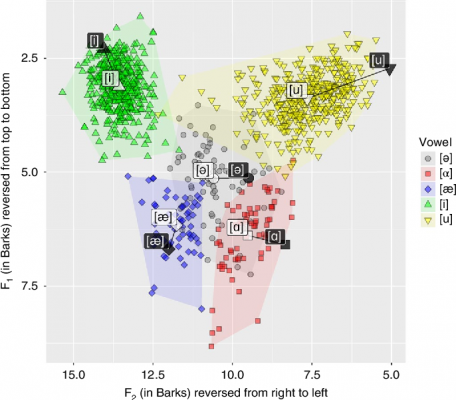Weak biases emerging from vocal tract anatomy shape the repeated transmission of vowels

Linguistic diversity is affected by multiple factors, but it is usually assumed that variation in the anatomy of our speech organs plays no explanatory role. Here we use realistic computer models of the human speech organs to test whether inter-individual and inter-group variation in the shape of the hard palate (the bony roof of the mouth) affects acoustics of speech sounds. Based on 107 midsagittal MRI scans of the hard palate of human participants, we modelled with high accuracy the articulation of a set of five cross-linguistically representative vowels by agents learning to produce speech sounds. We found that different hard palate shapes result in subtle differences in the acoustics and articulatory strategies of the produced vowels, and that these individual-level speech idiosyncrasies are amplified by the repeated transmission of language across generations. Therefore, we suggest that, besides culture and environment, quantitative biological variation can be amplified, also influencing language.